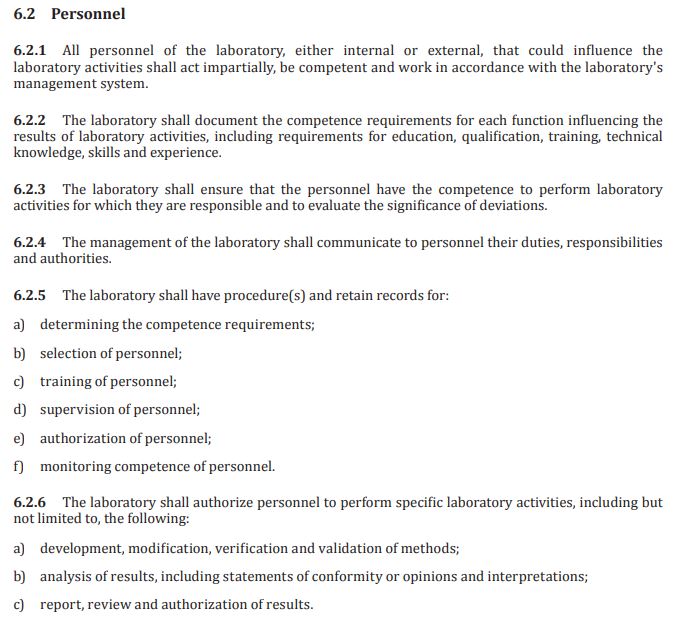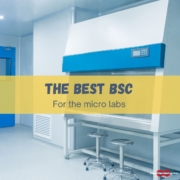Integrating a New Microbiologist: How to Optimize Training and Qualification
When a new microbiologist joins your team, before they can fully contribute to laboratory analyses, two crucial steps are necessary: training in the lab’s specific methods, followed by… their authorization!
But what is this exactly?
Authorization, far more than a mere formality, is an essential process. In a context where recruiting and especially retaining technicians is a challenge, this step of training and authorization, costly in time and resources, should not be taken lightly.
To shed light on this subject, we spoke with Catherine Pelletier, Manager of Expertise and Innovation at Mérieux Nutriscience, to better understand how laboratories can adapt to these challenges.
“The qualification and maintenance of technical staff’s skills are a major point, if not the most important, in the operation of a microbiology laboratory. It is undoubtedly a real issue of the moment.”
Catherine Pelletier
What does the standard say about staff qualification?
Staff qualification is a requirement of the standard NF ISO 17025: 2017 – Chapter 6.2: Personnel

This standard is mandatory for accredited laboratories. For other laboratories, it should be seen as a real safeguard, ensuring an effective and uniform level of competence of the microbiology laboratory staff.
This standard emphasizes the verification of each team member’s skills, through training, skill assessment, and continuous education.
How is the authorization of microbiology laboratory technicians conducted?
It is important to know that the standard sets a requirement for results (ensuring an effective and uniform level of competence of the staff). The laboratory thus has a choice of means to achieve this.
The process described below is “classic” in the majority of labs, but variations can sometimes be encountered.
The training always begins with an observation phase, under the guidance of a mentor, to immerse in the position.
The quality of this stage is key and will allow building trusted professional relationships within the team.
The choice of the mentor is crucial. Beyond technical skills, the mentor’s relational qualities and leadership are points to consider in the choice.
After the training period, during which the trainee will learn about the arrangements and work environment, an authorization step is necessary so they can work autonomously on a position.
Authorization is like a passing exam, consisting of two parts:
- The theoretical part: It covers key elements of the process, methods, practical cases more or less complex encountered in the laboratory and seen during their training.
- The practical part: with a precise description of the sample panel, representative of the analyses conducted in the laboratory: number and typology of samples (number of positives, number of negatives, concentration of microorganisms, …) and the decision criteria between the reference value and that of the trainee (e.g., < 0.1 log or 0.3 log depending on the cases).
“The provisions regarding quality process and those related to the authorization and maintenance of staff competencies are harmonized across all our laboratories to ensure a perfectly uniform level of service and qualification of the staff. It’s also a means to encourage mobility for a technician who would like to work at another site”
Catherine Pelletier – Mérieux Nutriscience
Authorization, where to start?
The process of training and authorization is not necessarily linked to the sample flow in the lab.
One does not qualify a technician on all steps at once, but in phases.
Of course, before starting their qualification, the technician needs to have an overview of the flow, to understand the stakes fully.
Some workstations are more accessible than others. With the help of Catherine Pelletier, we have ranked them in order of accessibility:
- Preparation of mother suspensions
- Subculturing
- Dilution inoculation
- Distribution of media
- Sample reception
- Reading
- Confirmation
- Signing/validation of results
New Challenges for the Authorization of Microbiologists
As we have seen, the authorization of microbiologists can be long and laborious, for the technician, but also for the laboratory!
In the context of high tension in the job sector, labs are forced to adapt and innovate in their approach to authorization.
But how? Here are some avenues suggested by Catherine Pelletier:
The lab must adapt to the profile of the younger generations of technicians who have less of a culture of writing. There is a challenge to find alternatives to the very (too?) long procedures (several tens of pages… sometimes).
Use of digital tools
The use of digital tools can, for example, make procedures more visual and interactive. Adopting these tools matches the expectations of the new generations more closely.
Gamification
Gamification can be used to facilitate situation simulations.
In the form of small games (digital or not), one can confront the technician with several different situations. The possibilities are almost endless.
Does this seem “ridiculous”? Yet, this is what pilots do very regularly by getting into flight simulators!
Coaching
It is also important to implement daily monitoring, to prevent deviations (the written rules don’t necessarily carry the same weight as before).
Implementing a mentorship program, both during the initial training and authorization and in the daily operations of the laboratory, can be beneficial both for the mentor and the mentee.
Conclusion
Integrating, training, and authorizing a microbiology technician are complex but essential steps.
Although tricks exist to make the process more interactive and relevant, the issue of retaining technicians remains paramount.
We have met several laboratories that have implemented successful initiatives to reduce turnover, proving that resignations are not inevitable.

















Leave a Reply
Want to join the discussion?Feel free to contribute!